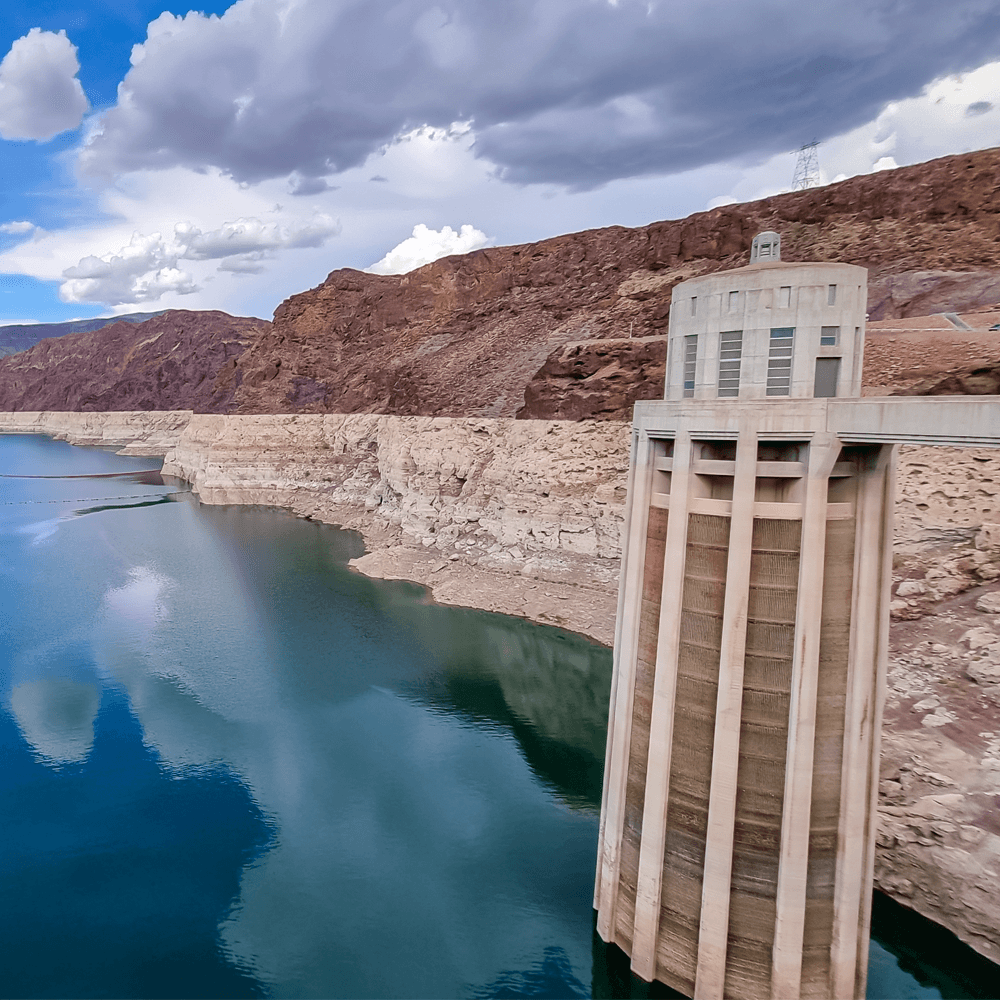AMWUA Blog
BY: AMWUA StaffPlenty of negotiations still needed when it comes to the Colorado River

The Colorado River consistently remains a hot topic when it comes to headlines as it continues to suffer from the consequences of a severe historic drought, overallocation, and hotter and drier conditions, causing the River to produce less water. Undoubtedly, there is a lot to talk about regarding the Colorado River - from current conditions to how the Bureau of Reclamation and the seven Basin States will manage the system after 2026 when the current operating guidelines expire.
To put it into perspective, in 2000, the systems’ reservoirs – Lake Mead and Lake Powell were full. Today, Lake Powell and Lake Mead — those two biggest reservoirs in the country are only at a combined 35% full, which is why it would take multiple years, like the last couple of winters, to undo the damage and restore the reservoirs, a scenario that water managers are no longer counting on due to the aridification in the Colorado River Basin. These latest projections were announced this week when the Bureau of Reclamation released the April 24-Month Study .
Water managers across the Basin understand while last year and this year produced favorable snowfall runoffs, this is only short-term good news. They know the overall trajectory of the system is declining and cannot be ignored. That is why it is critical that common ground be found through a collaborative agreement to protect the Colorado River for the 40 million people who rely on it for the long term rather than living on the edge year after year.
To achieve this, five proposals to date have been submitted to the Bureau of Reclamation for consideration, including one from the Lower Basin States – Arizona, California, and Nevada that reflects a new and more holistic approach to Colorado River management, in which required reductions are based on the health of all seven major system reservoirs. Additionally, proposals from the Upper Basin States , Tribes , Coalition of Conservation Groups , and a partnership of others focused on the ecosystem have been submitted.
Here is a timeline for how this process is anticipated to play out:
- March 2024: The U.S. Bureau of Reclamation released its final guidelines for operating Hoover Dam and Glen Canyon Dam through December 31st, 2026. That same month, the Bureau of Reclamation received five proposals for its post-2026 guidelines for managing the Colorado River.
- April 2024: Reclamation releases the April-24 Month Study that looks at the snowpack and its impact on Lake Powell.
- August 2024: Reclamation will release the August 24-Month Study that looks at the runoff and its impact on Lake Mead to determine what shortage level Mead will be in starting January 1st. We will most likely remain in Tier 1 shortage in 2025.
- December 2024: Reclamation is to publish its draft for the post-2026 guidelines and request comments from stakeholders and the public for at least 45 days.
- August 2025: Reclamation will most likely project that Lake Mead will remain in Tier 1 shortage in 2026.
- December 2025: Reclamation is expected to publish its final version of the post-2026 guidelines. These guidelines will be officially adopted in early 2026.
- January 1 2027: The Interim Guidelines and Drought Contingency Plan, which have jointly managed the Colorado River since 2007, will no longer be in effect. The post-2026 operating guidelines will then determine how Reclamation manages the river.
Finding an agreed-upon plan to reduce water consumption throughout the Basin for a river that is becoming smaller will not be a simple process, but a post-2026 world will come quickly, and that is why the AMWUA cities continue preparing for a future with less Colorado River water. Their planning initiatives include investing in infrastructure, ramping up conservation programs, and pursuing water resiliency projects – all of which will increase our collective sustainability in the desert.
This all highlights that there are still plenty of discussions and negotiations; therefore, we expect the headlines to continue.
What is the 24-month Study, and why does it matter?
First and foremost, the 24-month Study has been central to how the Colorado River is currently managed. It is a study, or forecast, of reservoir conditions along the Colorado River for the next 24 months. Its contents can impact the water supplies of the millions of people who rely on the Colorado River, including in Central Arizona.
The Study is also critical in determining how Lake Powell (behind Glen Canyon Dam) and Lake Mead (behind Hoover Dam) will be operated. The U.S. Bureau of Reclamation currently operates both reservoirs in a coordinated, balanced fashion primarily determined by how much water is stored in each reservoir. Lake Powell’s elevation is affected mainly by runoff generated from snowmelt, which is high in the Rockies. In contrast, the level of Lake Mead, located downstream, is primarily managed by how much water is purposefully released from Lake Powell.
The April 24-month Study is unique because it gives us our first solid look at spring and summer runoff conditions after the winter season has ended. Based on April’s projection, more or less water may be released from Powell to Mead than previously planned. That change in the amount of water released into Lake Mead will offer a better picture of what to expect in August, when the August 24-month Study will determine what level of shortage will be declared and implemented in January of the following year.
The Arizona Department of Water Resources (ADWR) has a Colorado River Interactive Dashboard available on current conditions and updated levels of the Colorado River System.
To print or save this week's blog, a PDF version is available HERE .
For 55 years, the Arizona Municipal Water Users Association has helped protect our member cities' ability to provide their communities with assured, safe, and sustainable water supplies. For more information, visit www.amwua.org .
